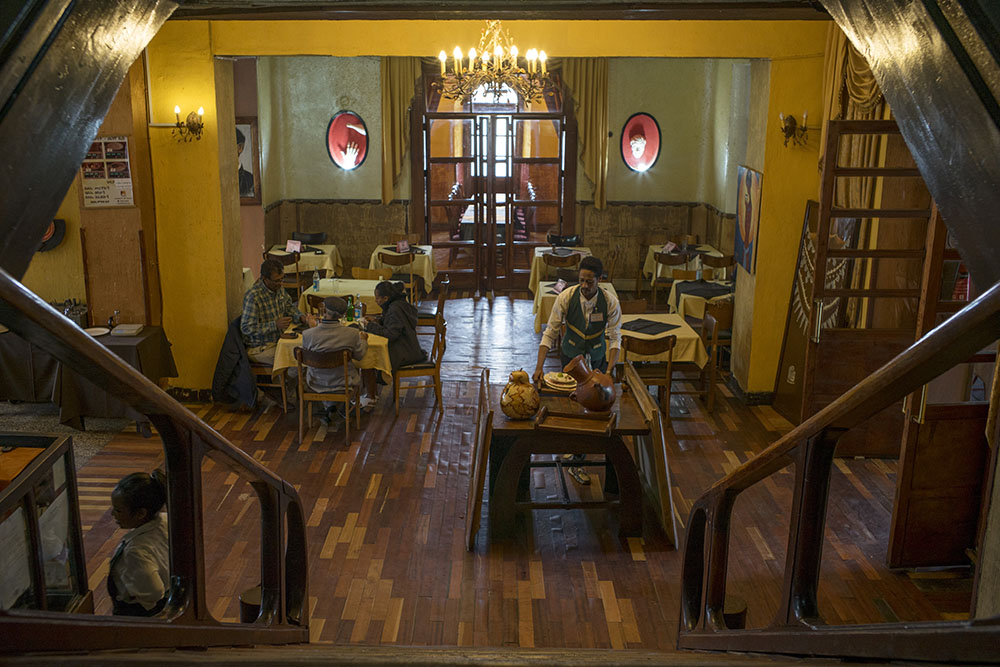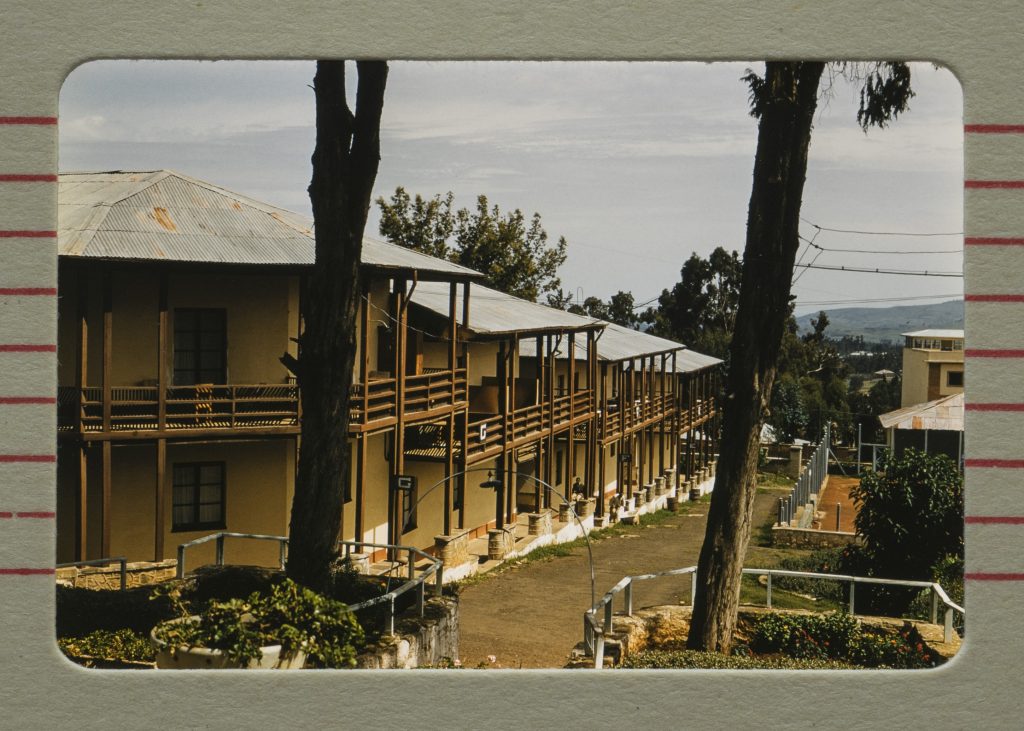[vc_row][vc_column width=”1/1″][vc_raw_js]JTNDZGl2JTIwc3R5bGUlM0QlMjJwYWRkaW5nJTNBNTYuMjUlMjUlMjAwJTIwMCUyMDAlM0Jwb3NpdGlvbiUzQXJlbGF0aXZlJTNCJTIyJTNFJTNDaWZyYW1lJTIwc3JjJTNEJTIyaHR0cHMlM0ElMkYlMkZwbGF5ZXIudmltZW8uY29tJTJGdmlkZW8lMkYzNzg5MDY1ODUlM0Z0aXRsZSUzRDAlMjZieWxpbmUlM0QwJTI2cG9ydHJhaXQlM0QwJTIyJTIwc3R5bGUlM0QlMjJwb3NpdGlvbiUzQWFic29sdXRlJTNCdG9wJTNBMCUzQmxlZnQlM0EwJTNCd2lkdGglM0ExMDAlMjUlM0JoZWlnaHQlM0ExMDAlMjUlM0IlMjIlMjBmcmFtZWJvcmRlciUzRCUyMjAlMjIlMjBhbGxvdyUzRCUyMmF1dG9wbGF5JTNCJTIwZnVsbHNjcmVlbiUyMiUyMGFsbG93ZnVsbHNjcmVlbiUzRSUzQyUyRmlmcmFtZSUzRSUzQyUyRmRpdiUzRSUzQ3NjcmlwdCUyMHNyYyUzRCUyMmh0dHBzJTNBJTJGJTJGcGxheWVyLnZpbWVvLmNvbSUyRmFwaSUyRnBsYXllci5qcyUyMiUzRSUzQyUyRnNjcmlwdCUzRQ==[/vc_raw_js][/vc_column][/vc_row][vc_row row_height_percent=”0″ overlay_alpha=”50″ gutter_size=”3″ column_width_percent=”100″ shift_y=”0″ z_index=”0″][vc_column][vc_column_text]
Header: blend of photographs made at Markato in Addis Ababa by Paul Julien in 1955 (PJU-colour slides box 6) Collection Nederlands Fotomuseum) and me (digital photographs, August 2019)
From a radio lecture, broadcasted in 1933
“Gbarnga is an economic hub […] with a level of activity one wouldn’t expect in central Liberia. It is the seat of a District Commissioner, Mr. Ross, for whom I carried a letter from the president giving him the assignment to assist my expedition. It had been difficult along the way to get access to the materials needed for my blood research so any assistance was more than welcome. Mr. Ross went to the market with me, asked the people to squat and, helped by an interpreter, addressed them: “A powerful witch-man came to the village, a sorcerer, a big medicine man. Tomorrow 8am all those suffering from pest, all the lepers, all those with yaws should come to the courthouse to be examined and give blood.” There was obviously a misunderstanding and the man took me to be a medical doctor. I hurried to whisper in the commissioner’s ear that I would prefer healthy people. The messenger shouted: “The healthy should also come, women, children all should come. The whole village should come. Understood?” A loud applause was the result.
Early the next morning I was busy preparing for the research. Eight am there was nobody there. Nine, nobody, quarter past nine Mr. Ross grew nervous and sent out a group of messengers to force the people, with violence if need be, to the courthouse. It was all in vain. The village was completely deserted. The whole community had fled into the forest, and I may add that they did not return before I left a couple of days later.”

From an interview with Julien published in 1960.
“I can imagine that someone who collects blood samples is thought of as a medical doctor. There are of course photographs on which I am taking or analysing these samples while surrounded by a group of Negroes. I always tell them that I have come to see their diseases. They would not understand my true interests and also, I have been able to help many people with medication, injections and dressing of wounds. The authorities of course know better.”[1]The radio lecture was broadcasted by the K.R.O., the interview was published by the ‘Katholieke Illustratie’. Both media had a national reach and a Catholic denomination. Julien also operated, … Continue reading

Addis Ababa, Wednesday August 7th 2019
Dear Dr. Julien,
Sixty-four years after you briefly visited this town, on your way to South Western Ethiopia, I am in Addis Ababa. Yesterday I visited Itegue Taitu Hotel, where you spent your first nights in the country. I brought a print of the Kodachrome slide you made of the accommodation. The host I met was surprised to see how much changed since 1955. He showed me where you once stood, looking down towards the building behind the restaurant and the tennis court on its right. A banner and a truck now blocked the view. The tennis court, the host informed me, had long gone. Meanwhile time seemed to have stood still in the restaurant itself. While enjoying my lunch it was easy to imagine you coming down the stairs any moment.


While I type this letter on my laptop computer a documentary titled ‘The Great Hack’[2]‘The Great Hack’, Noujaim & Amer, released January 2019, distributed by Netflix, USA is playing on the television set of my host, artist Michael Tsegaye. This film addresses the theft of personal data shared on the internet, a phenomenon you may remember emerging in the late 1990s. The stolen data was used to influence national elections without the ‘provider’ being aware of it. You too collected data from individuals you encountered on your journeys without their informed consent. This therefore seems to be an appropriate moment to share some thoughts with you about the relation between our respective ambitions and the effects our actions had and could have. In other words, this letter is about impact.
Last Monday I did a presentation for a group of Ethiopian photographers and designers. After speaking about my way of working[3]See the pp.13-30 of my dissertation (https://openaccess.leidenuniv.nl/handle/1887/67951) and the first letter to Julien on Bridging Humanities. I showed them the photographs and films you produced here. I added translated information from your notebook and from newspaper clippings reporting on a public lecture with “Shankala” as its title. Michael told me that Shankala, Amharic for black[4]See Shinn & Ofcansky, p. 363, ‘Ethiopian Historical Dictioary’, Scarecrow Press , is now considered to be a derogatory term because it was used to refer to people with dark skin as well as to slaves. I decided to avoid using the word. I did, however, use ‘Negroe’ and ‘Pygmy’ when quoting you while I am well aware that these words are considered to be offensive too. Their past and present day uses by non-black people like you and me emphasize differences between people with different position of power. They generate a distance I consider to be problematic. One of the members of the audience was indeed offended by me using the words, while others argued that the messenger should not be shot here.

It was not the first time I encountered this kind of response to the work I, as a white European, do on the African continent or to the historical materials I bring to the table. I take this to be a reply to the privileged positions that both you and I have and use to come, ‘take’ whatever it is we need and leave again. This observation could result in a dismissal of ‘your’ photographs because it reduces their meaning to your position as a maker. Such a judgment, however, also dismisses the possible agency and relevance of the visibility of the people, places and objects you photographed. It eliminates the potential impact of the accessibility of the photographs for them, and the possibility for people in ‘the West’ to learn from them. In order for this potential to unfold I take it to be my responsibility to explain to who-ever I encounter and work with what the purpose of my visit is. This may lead to uncomfortable situations, as was the case with the person I offended, despite my attempts to carefully position my words, yet it cannot result in being less honest about my intentions. Which reminds me of a question I wanted to ask. You repeatedly mention in your writing how the ‘natives’ you met were rude, primitive or dishonest. Did it ever occur to you that they may have, rightfully, thought the same of you?

With regards to your first major scientific expedition in 1932 I have a more particular but related concern. July 2014 I was in Liberia for the third time. During earlier visits I followed the same route you travelled eighty-two years earlier. I visited, as I mentioned in the previous letter, descendants of ‘King’ Kwei Dokie and prepared an exhibition of your photographs in the National Museum in Monrovia, that was now about to open. Ebola, a deadly and highly contagious virus, had been raging through the region for a couple of months. The crisis related to it reached a new height in the week before the planned exhibition opening. I was invited to speak about the show during the weekly governmental press conference while Ebola was, of course, its major topic. After providing the journalists who were present with numerous facts about the virus, the Minister of Health addressed the people of Liberia directly through the microphones and cameras in the room: ”You should not be afraid of the health workers, because they too get sick”. I found it hard to believe my ears. As if the Minister was aware of this he repeated the remark several times. Then I remembered reading the anecdote on the population of Gbarnga fleeing town because of the way in which the district commissioner had communicated the purpose of your visit. Is it possible that you, and others with related missions, contributed to the continued fear of western medicine that the minister tapped into? Would you do things differently now?
And also, going back to a more general concern about impact, would it make sense for you to be decentered from the meaning and value of the photographs you produced? This question as well as the others asked earlier will stay with me as I work my way towards the next letter.
With best regards,
Andrea
p.s. I almost forgot. Yesterday the first proof of your presence on the African continent from someone else’s perspective also reached me. Johan Helland, an emeritus anthropologist specialised in issues concerning the Horn of Africa, replied to the electronic letter I sent him. He was the eight-year-old son of the Norwegian family with whom you spent a night in Southern Ethiopia. He recognised all the adults on a group portrait I attached to the letter. You took the picture at the mission in Neghelle. Johan does not remember you himself but recalls his mother mentioning an anthropologist who was on his way to research ‘pygmies’ and visit Lake Stephanie. The failure to achieve both these goals of your Ethiopian expedition and the way you, nevertheless, transformed your experiences into a public lecture might just become the topic of my next letter.

An earlier version of this letter was published in the first issue of ‘Trigger’, an annual publication of FoMu, the photography museum in Antwerp, Belgium
[/vc_column_text][/vc_column][/vc_row]
References
| ↑1 | The radio lecture was broadcasted by the K.R.O., the interview was published by the ‘Katholieke Illustratie’. Both media had a national reach and a Catholic denomination. Julien also operated, next to his ideas about science, from a Catholic worldview. |
|---|---|
| ↑2 | ‘The Great Hack’, Noujaim & Amer, released January 2019, distributed by Netflix, USA |
| ↑3 | See the pp.13-30 of my dissertation (https://openaccess.leidenuniv.nl/handle/1887/67951) and the first letter to Julien on Bridging Humanities. |
| ↑4 | See Shinn & Ofcansky, p. 363, ‘Ethiopian Historical Dictioary’, Scarecrow Press |
